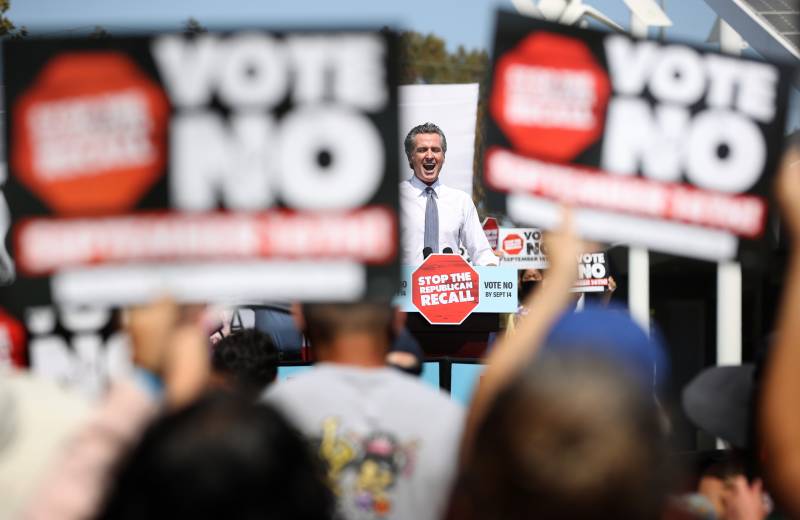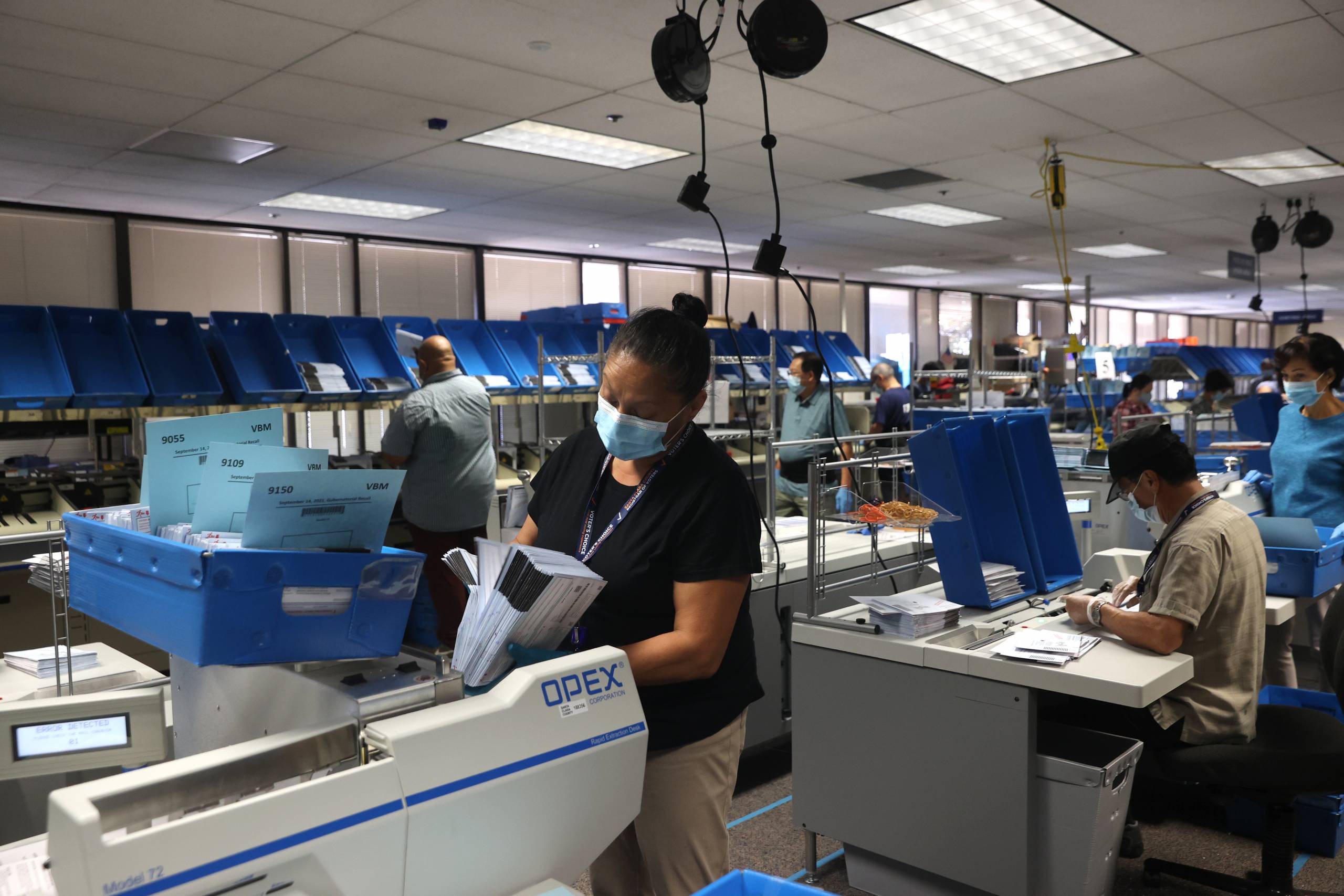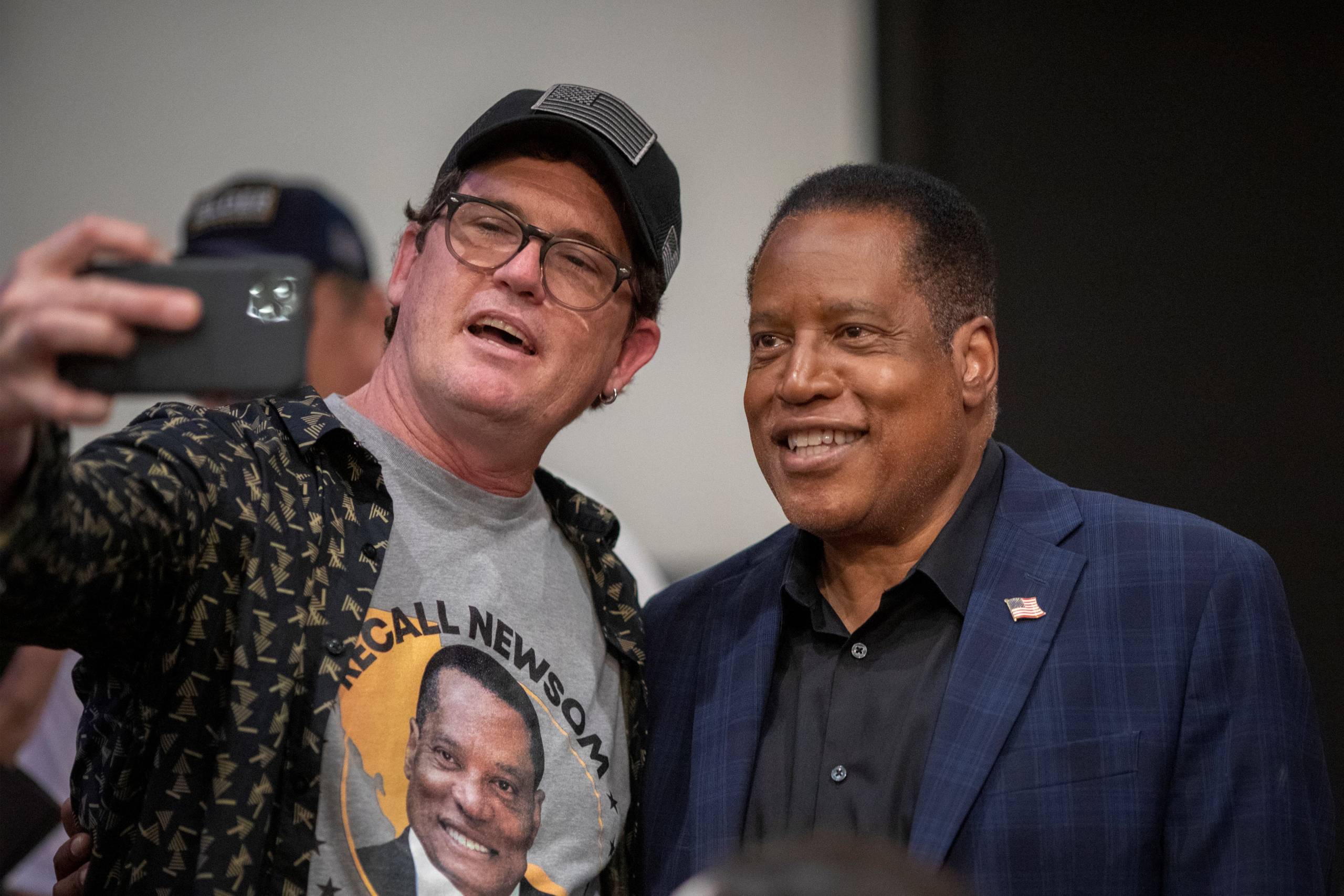A rare event happens Tuesday in California: Californians will decide whether Democratic Gov. Gavin Newsom should remain in office.
What's at Stake Nationwide in the California Recall

It’s only the second recall election in the state to qualify for the ballot, but the second in the past 20 years. That previous recall, in 2003, resulted in actor Arnold Schwarzenegger becoming governor.
A lot has changed since then on many fronts, but that it’s even happening in the first place — and who the leading Republican contender is — is an example of how politics has shifted in the state and reflects a national shift toward sharper partisanship.
The election will also have national consequences. A California governor could appoint a new U.S. senator to the evenly divided chamber in the next year or so. And this is the first big test of whether Democrats can fire up their base — even in a very blue state — ahead of next year’s midterm elections when Republicans are favored to take back the House.
Here’s a primer on the recall, how it works and how we got here. But first:
What are the potential national political consequences?
The fact that a Democratic governor in a state that President Biden won by almost 30 percentage points in 2020 doesn’t stand a near 0% chance of being ousted tells you a degree of the story of off-year elections.
The party out of power is usually the one that’s most fired up. During this pandemic, conservatives have been particularly vexed by Democratic governance — and they have no greater example for their ire, of everything they dislike about liberals, than California. So Newsom was already a ripe target.
A test of Democratic mobilization. All eyes will be on to what degree Democrats are enthusiastic ahead of 2022. There are certainly motivators, considering the stakes the threat of Republican governance poses to the center-left, from the handling of the pandemic to extreme abortion laws like Texas’s.
Given that Democrats outnumber GOP voters by almost 5 million in California, how close Republicans get to recalling Newsom — or of course if he’s recalled — is going to be something to watch.
In very practical terms, the U.S. Senate could be at stake. At first, this doesn’t seem to make sense, since this is about a governorship. But consider that Democrats control the 50-50 Senate by only the narrowest of margins, needing Vice President Harris to break ties.
The California governor has the power to appoint a U.S. senator and should there be a vacancy, Newsom or his replacement would serve until January 2023, and Sen. Dianne Feinstein would be approaching 90 at that point.
A test of Biden’s clout. The president is campaigning for and with Newsom on Monday. That raises the political stakes. If Newsom were to lose — or if the election is close — Biden’s sway would be in question. And it would come at a time when Biden’s approval rating has been slipping nationally, given the resurgent coronavirus due to the delta variant and following the Afghanistan withdrawal.
A sign of the growing strength of a partisan minority? To qualify for the ballot, a recall effort requires signatures that amount to at least 12% of the turnout of the last gubernatorial election, plus some other total vote thresholds. While this year that’s about 1.5 million signatures — undoubtedly a lot of signatures — you can find 12% of people who agree that they are very upset about a lot of things.
What are the future repercussions when that’s the bar to cause a statewide election that is costing California $276 million? Calculating that out for future fights, as the country becomes even more polarized, could be astronomical.
The factors at play here — the relatively low threshold to get on the ballot, and then if the governor is recalled, that the replacement could win with a plurality of votes — follow larger, national complaints about the growing power of a political minority, like with the Senate filibuster and the Electoral College.

So how does this recall actually work?
Californians have been legally able to recall their governors since 1911. Every governor in the past 60 years has faced a recall attempt, though only two, including this one, have qualified for the ballot. Newsom has faced at least five attempts.
Newsom’s opponents got 1.7 million signatures to get this recall on the ballot, higher than the 1.5 million needed, but they also had more time than usual. Normally, recall petitioners get a little over five months to turn in signatures. This effort was extended four months beyond that because of the pandemic.
How did Newsom end up in this position?
The recall effort began in June 2020 and didn’t have to do with COVID-19. As KQED’s Scott Shafer told the NPR Politics podcast, it was about the death penalty, crime, homelessness, housing costs and immigration.
But it very much became about the pandemic after Newsom was caught on camera at a birthday party — without a mask — at one of the most expensive restaurants in the country, The French Laundry, last November. It reeked of hypocrisy, given that this was during the height of the pandemic and with restrictions in place in California.
How will a winner be decided?
Ballots were mailed to all 22 million registered voters in the state about a month before Tuesday’s election. There are two questions voters can decide on:
- Should Newsom be recalled?
- Who should replace him? If a majority votes “no” on the first question, then the second question doesn’t matter. But if “yes” on Question 1 gets 50% plus one vote, Newsom would be recalled, and the highest vote-getter on Question 2 would become governor (by Oct. 22 when the state would certify the results) and serve out the remainder of Newsom’s term.
Californians do not have to vote on both questions. And the use of mail-in ballots could complicate the turnout picture, altering the traditional notion of whose voters are motivated to hit the polls.
Who is on the ballot to replace Newsom?
There are 46 people who qualified to be on the ballot — 24 Republicans, 10 people with no party affiliation, nine Democrats, two from the Green Party and one Libertarian.
The leading replacement contender is Republican Larry Elder, a controversial talk radio host. (The ballot also includes Caitlyn Jenner, who is not expected to fare well.)

Who is Larry Elder?
Newsom has been happy to elevate Elder because of his many controversial statements. For example, Elder, who is Black, has said it can be argued that enslavers are owed reparations because slavery was legal and enslaved people were “property” of those owners. He has also said Blacks “exaggerate” racism, that “women exaggerate” sexism and that working mothers aren’t as “dedicated” to work as others — among other things.
That someone who has expressed such extreme views could be the leading Republican candidate in a state like California shows just how much the party — not just in California but across the country — has changed since electing Donald Trump as president.
When was the last California recall?
2003. Local issues, from an energy crisis and a budget deficit to a gas tax hike, dominated and hobbled Democratic Gov. Gray Davis. Davis’s approval rating was mired in the 20s, he was recalled, and America was given “The Governator.” (If you think that’s bad, you can imagine — if you don’t remember — the number of Total Recall headlines in reference to that election.)
Three major differences, though, between the 2003 and 2021 recalls:
- This recall has been far more nationalized. Newsom has essentially put GOP governance on the ballot, especially regarding the coronavirus pandemic, which is what ironically supercharged the effort to get the recall on the ballot in the first place.
- Unlike Davis, Newsom is fairly popular. His approval ratings are routinely above 50%.
- And Schwarzenegger was something that’s now seemingly an endangered species among elected officials: a Republican moderate. Elder is decidedly not. In addition to his controversial views, Elder has definitively said he would appoint a Republican to the U.S. Senate if Feinstein’s seat were to come open.